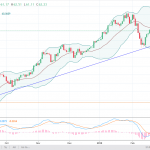Trading strategies are the cornerstone of success in financial markets. Whether you’re new to trading or an experienced investor, understanding different approaches can help optimize your decisions, manage risk, and potentially increase profitability. Let’s explore some of the most common trading strategies, offering insights to help you select the best fit based on your goals, risk tolerance, and trading style.

1. News Trading Strategy
A news trading strategy capitalizes on the rapid market movements triggered by economic news releases. Traders analyze market expectations before, during, and after news events to make decisions. While potentially profitable, this strategy requires fast judgment and a deep understanding of how markets respond to news. Key considerations include whether the news is already priced in and how market reactions align with expectations.
Pros:
Cons:
2. End-of-Day Trading Strategy
End-of-day traders execute trades near the market’s close, capitalizing on price movements and trends visible by the end of the trading day. This approach typically involves studying the price action of the current and previous days. By setting predefined risk management measures like stop-losses and take-profit orders, traders can mitigate overnight risks.
Pros:
Cons:
3. Swing Trading Strategy
Swing trading focuses on capturing short- to medium-term gains by taking advantage of price swings within a broader trend. Swing traders typically hold positions for several days or even weeks, analyzing market trends and technical indicators to decide on entry and exit points.
Pros:
Cons:
4. Day Trading Strategy
Day traders buy and sell financial instruments within the same trading day. They close all positions before the market closes, avoiding overnight risk. Day trading involves studying short-term price movements, market liquidity, and volatility. Traders may focus on a few key trades a day but often take multiple positions depending on market conditions.
Pros:
Cons:
5. Trend Trading Strategy
Trend trading involves identifying and following a market’s prevailing trend. Traders only enter trades in the direction of that trend and exit when the trend shows signs of reversal. This strategy is grounded in technical analysis, utilizing tools like moving averages and trendlines to confirm a trend’s direction.
Pros:
Cons:
6. Scalping Trading Strategy
Scalping is a fast-paced trading strategy where traders aim to profit from very small price changes. Scalpers place numerous trades throughout the day, holding positions for just seconds or minutes. This strategy requires an extremely disciplined approach and focuses on markets with high liquidity, such as forex or certain stocks.
Pros:
Cons:
7. Position Trading Strategy
Position trading is a long-term approach where traders hold positions for weeks, months, or even years, based on the expectation that a significant trend will play out over time. This strategy relies heavily on fundamental analysis, focusing on macroeconomic factors and market cycles to make decisions.
Pros:
Cons:
Which Trading Strategy is Best for You?Selecting the best trading strategy depends on several factors including your personality, risk tolerance, time commitment, and market understanding. It’s important to test different strategies on a demo account before committing real capital. Each approach has its strengths and weaknesses, and finding the right balance for your unique situation is key to long-term success.In conclusion, the diversity of trading strategies allows traders to tailor their approach to specific market conditions and personal preferences. By understanding these strategies and applying risk management principles, traders can navigate the complexities of financial markets with greater confidence and discipline.More By This Author:What Are The Different Types Of Stocks?
How Do I Start Investing?
What Is The Difference Between Trading And Investing?









Leave A Comment